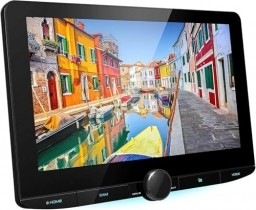Experiencing issues with your 2015 Toyota Camry’s OBD2 port not recognizing devices can be frustrating, especially when you’re trying to diagnose a problem or monitor your vehicle’s health. Many Camry owners rely on the On-Board Diagnostics II (OBD2) port for everything from checking engine codes to monitoring tire pressure. If you’re finding that your OBD2 scanner, or in this case, your aftermarket head unit integration, isn’t communicating with your Camry’s computer, you’re in the right place. Let’s explore some potential reasons and troubleshooting steps to get your OBD2 port working again.
One common scenario arises after installing aftermarket electronics, such as a new car stereo. You might find that after installation, certain features that rely on the OBD2 connection, like Tire Pressure Monitoring System (TPMS) data display on your head unit, are no longer functioning. This situation can leave you wondering if the issue is with the OBD2 port itself, the new device, or the integration between them.
In many cases, the OBD2 port is indeed functioning correctly, but the problem lies in the communication or configuration settings. Let’s investigate some steps you can take to diagnose why your 2015 Toyota Camry OBD2 port might not be recognizing devices.
First, it’s essential to understand that the OBD2 system in your Toyota Camry is responsible for providing a wealth of data about your vehicle’s performance and health. From engine diagnostics to sensor readings, the OBD2 port is a gateway to your car’s computer. When it’s not working as expected, pinpointing the cause is crucial.
One of the initial checks you can perform is to ensure the OBD2 port itself is physically intact and free from any damage. Look for bent pins or debris that might be obstructing a proper connection. The OBD2 port is typically located under the dashboard on the driver’s side.
If the port appears to be in good condition, the next step is to consider the device you’re trying to connect. Have you tested your OBD2 scanner or device on another vehicle to confirm it’s working correctly? This simple step can rule out a faulty scanner as the culprit.
Assuming your scanner is functional, let’s delve into potential issues specific to your 2015 Toyota Camry. One common oversight is checking the vehicle’s fuses. There’s often a dedicated fuse for the OBD2 system, and a blown fuse can easily disable the port. Consult your Camry’s owner’s manual to locate the OBD2 fuse and inspect it for any signs of damage. Replacing a blown fuse is a straightforward fix if this is the issue.
If fuses are not the problem, and you’ve recently installed an aftermarket head unit or any other electronic modifications, the integration with these new components could be the source of the OBD2 recognition issue. In situations where a new head unit is installed with interfaces like Maestro, these systems are designed to relay vehicle data, including TPMS information, to the aftermarket unit.
If you’re experiencing a situation similar to the original poster, where TPMS data is no longer displaying on your Kenwood DMX1037s head unit after installation, even though a tire shop confirmed the sensors are reading correctly, the problem might be related to the Maestro integration or head unit settings.
It’s possible that during the installation process or subsequent system resets, some configuration settings related to OBD2 data display were altered. Navigating through your Kenwood DMX1037s head unit’s settings menus, especially those related to vehicle integration or OEM setup, is advisable. Look for options that might pertain to TPMS, OBD2 data, or vehicle information display. Consult your Kenwood head unit’s manual and the Maestro interface documentation for guidance on these settings.
In some cases, a system reset might be necessary to re-establish communication. However, proceed with caution when performing resets, as it’s important to understand what you are resetting and the potential consequences. Consulting the Maestro documentation or reaching out to the manufacturer’s support, as the original poster planned to do with Tech12volt, is a prudent step. Experts familiar with these integration systems can provide specific troubleshooting steps and guidance tailored to your setup.
If you’ve exhausted these initial troubleshooting steps and are still facing issues with your 2015 Toyota Camry OBD2 port not recognizing devices, seeking professional assistance from a qualified automotive technician is recommended. They possess specialized diagnostic tools and expertise to pinpoint more complex issues, such as wiring problems, CAN bus communication faults, or deeper computer system malfunctions.
In conclusion, when your 2015 Toyota Camry OBD2 port is not recognizing devices, start with basic checks like physical inspection and fuse verification. If you’ve recently installed aftermarket electronics, focus on the integration and settings of these components. By systematically troubleshooting, you can often identify and resolve the issue, restoring the functionality of your OBD2 port and the valuable vehicle data it provides. If all else fails, professional diagnostic services are available to ensure your Camry’s OBD2 system is functioning correctly.
